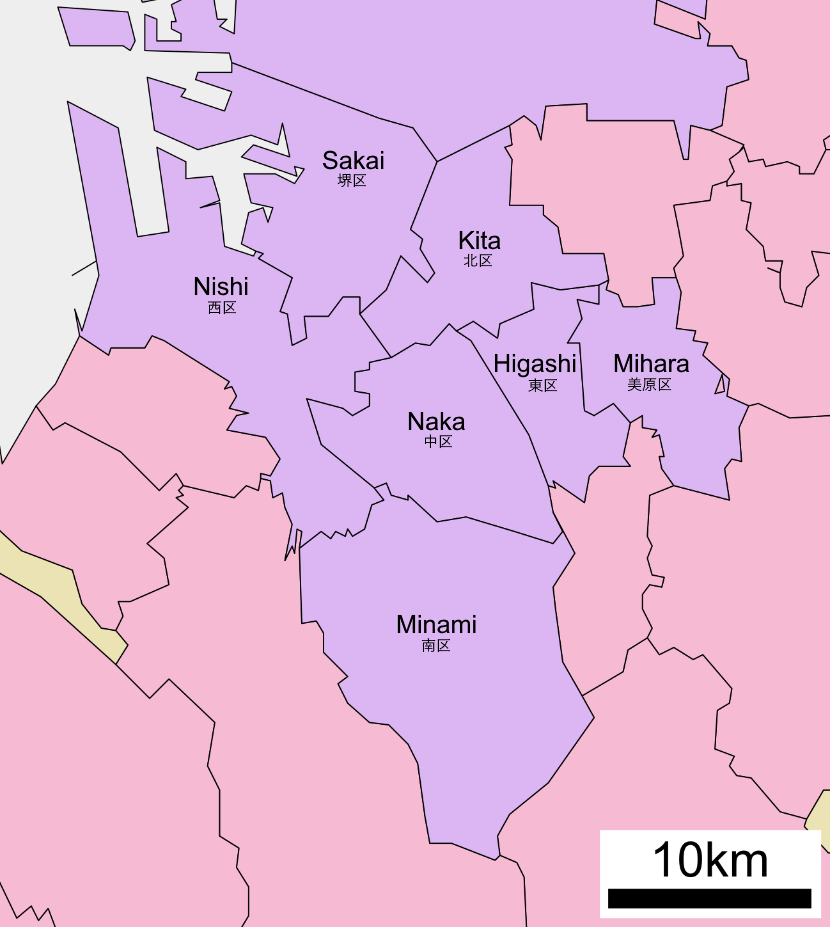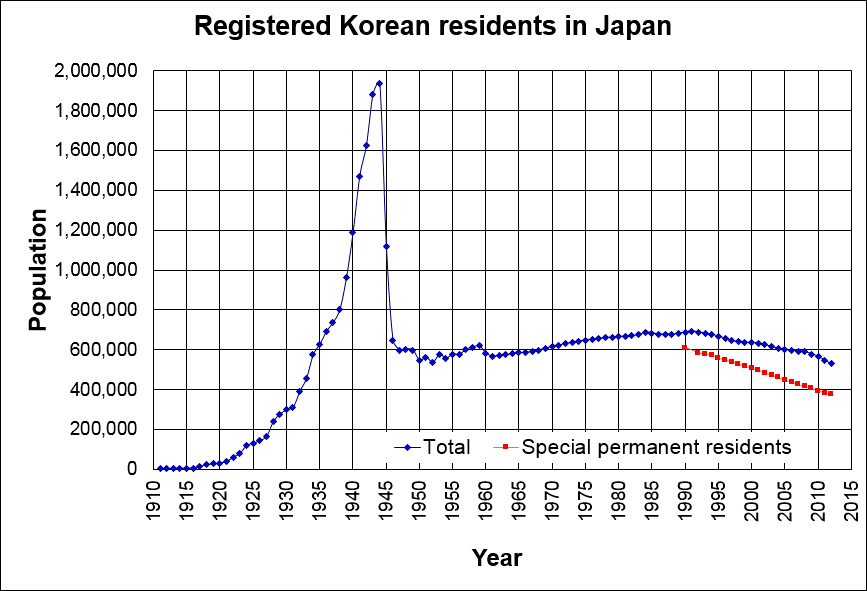|
Kazunari Okayama
or Kang Il-Sung (Korean: 강일성, Hanja: 康一成) is a former Japanese football player of Korean descent. Playing career Okayama was born in Sakai on April 24, 1978. After graduating from high school, he joined J1 League club Yokohama Marinos (later ''Yokohama F. Marinos'') in 1997. On September 6, he debuted as forward and scored a goal against Sanfrecce Hiroshima. After the debut, he scored a goal for 3 matches in a row. However he could hardly play in the match from 1998. In June 1999, he moved to J2 League club Omiya Ardija. In 2000, he returned to Yokohama F. Marinos. He was converted to center back and played many matches. In 2001, he moved to Cerezo Osaka. He played many matches as forward. In 2002, he moved to J2 club Kawasaki Frontale and became a regular player as right defender of three backs defense. Although he played many matches in 2003, he could not play as starting member in most matches and he could hardly play in the match in 2004. In 2005, he moved to Avi ... [...More Info...] [...Related Items...] OR: [Wikipedia] [Google] [Baidu] |
Sakai
is a city located in Osaka Prefecture, Japan. It has been one of the largest and most important seaports of Japan since the medieval era. Sakai is known for its keyhole-shaped burial mounds, or kofun, which date from the fifth century and include Daisen Kofun, the largest grave in the world by area. Once known for swords, Sakai is now famous for the quality of its cutlery. , the city had an estimated population of 819,965, making it the fourteenth most populous city in Japan (excluding Tokyo). Geography Sakai is located in southern Osaka Prefecture, on the edge of Osaka Bay and directly south of the city of Osaka. Neighboring municipalities Osaka Prefecture *Osaka * Matsubara *Habikino *Ōsakasayama *Kawachinagano * Izumi * Takaishi Climate Sakai has a Humid subtropical climate (Köppen ''Cfa'') characterized by warm summers and cool winters with light to no snowfall. The average annual temperature in Sakai is . The average annual rainfall is with June as the wettest mont ... [...More Info...] [...Related Items...] OR: [Wikipedia] [Google] [Baidu] |
1999 Yokohama F
File:1999 Events Collage.png, From left, clockwise: The funeral procession of King Hussein of Jordan in Amman; the 1999 İzmit earthquake kills over 17,000 people in Turkey; the Columbine High School massacre, one of the first major school shootings in the United States; the Year 2000 problem ("Y2K"), perceived as a major concern in the lead-up to the year 2000; the Millennium Dome opens in London; online music downloading platform Napster is launched, soon a source of online piracy; NASA loses both the Mars Climate Orbiter and the Mars Polar Lander; a destroyed T-55 tank near Prizren during the Kosovo War., 300x300px, thumb rect 0 0 200 200 Death and state funeral of King Hussein rect 200 0 400 200 1999 İzmit earthquake rect 400 0 600 200 Columbine High School massacre rect 0 200 300 400 Kosovo War rect 300 200 600 400 Year 2000 problem rect 0 400 200 600 Mars Climate Orbiter rect 200 400 400 600 Napster rect 400 400 600 600 Millennium Dome 1999 was designated as ... [...More Info...] [...Related Items...] OR: [Wikipedia] [Google] [Baidu] |
1998 Yokohama Marinos Season
1998 Yokohama Marinos season Competitions Domestic results J.League Emperor's Cup J.League Cup Player statistics Other pages J.League official site {{1998 in Japanese football Yokohama Marinos is a Japanese professional football club based in Yokohama, Kanagawa Prefecture, part of the Greater Tokyo Area. The club competes in the J1 League, which is the top tier of football in the country. Having won the J-League title four times and ... Yokohama F. Marinos seasons ... [...More Info...] [...Related Items...] OR: [Wikipedia] [Google] [Baidu] |
1997 Yokohama Marinos Season
1997 Yokohama Marinos season Competitions Domestic results J.League Emperor's Cup J.League Cup Player statistics * † player(s) joined the team after the opening of this season. Transfers In: Out: Transfers during the season In * Masahiro Fukazawa (loan return from River Plate on June) *Petković (from OFK Beograd on August) * Kazumasa Kawano (from Nagoya Grampus Eight) *Kazunari Okayama (from Hatsushiba Hashimoto Senior High School) Out *Masaharu Suzuki (to Nagoya Grampus Eight) * Hideki Matsuki *Sotaro Yasunaga (loan to Lleida on August) Awards *J.League Best XI: Masami Ihara References *''J.LEAGUE OFFICIAL GUIDE 1997'', 1997 *''J.LEAGUE OFFICIAL GUIDE 1998'', 1996 *''J.LEAGUE YEARBOOK 1999'', 1999 Other pages J. League official siteYokohama F. Marinos official site {{1997 in Japanese football Yokohama Marinos is a Japanese professional football club based in Yokohama, Kanagawa P ... [...More Info...] [...Related Items...] OR: [Wikipedia] [Google] [Baidu] |
Japan Football League
The also known as simply the JFL is the 4th tier of the Japanese association football league system, positioned beneath the three divisions of the J.League. The league features fully professional teams that hold J.League associate membership among its ranks. Relationship and position of J. League and Japan Football League (JFL) According to the official document published in December 2013 when the J3 League was established, the J3 League was the 3rd level of the J.League. The J.League and non-J.League amateur leagues have different hierarchical structures, and the J3 League was ranked on the same level as the JFL. In addition, the JFL itself has the same recognition in the material showing the league composition on the official website. Therefore, the JFL is treated as equal to J3 in theory, but in practice it is considered equivalent to a 4th division. History The Japan Football League started from the 1999 season when the second division of J.League (J2) was also born. Un ... [...More Info...] [...Related Items...] OR: [Wikipedia] [Google] [Baidu] |
Japanese Regional Leagues
are a group of parallel association football leagues in Japan that are organized on the regional basis. They form the fifth tier of the Japanese association football league system below the nationwide Japan Football League. Overview Japan is divided regionally in a variety of ways, some of them administrative and some more historical. For the football purposes, the country is divided into nine regions. All regional league champions earn the right to participate in the Regional Football League Competition (since 2016 renamed Japan Regional Football Champions League) at the end of the year. Runners-up may also qualify according to criteria set by the Japan Football Association. Regional league clubs also compete in the All Japan Senior Football Championship, a cup competition. The winner of this cup also earns a berth in the Regional League promotion series, and the runner-up may also qualify depending on space and JFA criteria. Regional league clubs must win the qualifying ... [...More Info...] [...Related Items...] OR: [Wikipedia] [Google] [Baidu] |
J2 League
The or simply J2 is the second division of the and the second level of the Japanese association football league system. The top tier is represented by the J1 League. It (along with the rest of the J.League) is currently sponsored by Meiji Yasuda Life and it is thus officially known as the . Until the 2014 season it was named the J.League Division 2. Second-tier club football has existed in Japan since 1972; however, it was only professionalized during the 1999 season with ten clubs. The league took one relegating club from the top division and nine clubs from the second-tier semi-professional former Japan Football League to create the J2 League. The remaining seven clubs in the Japan Football League, the newly formed Yokohama FC, and one promoting club from the Regional Leagues, formed the nine-club Japan Football League, then the third tier of Japanese football. The third tier is now represented by the J3 League. History Phases of Japanese second-tier association football ... [...More Info...] [...Related Items...] OR: [Wikipedia] [Google] [Baidu] |
Sanfrecce Hiroshima
Sanfrecce Hiroshima ( ja, サンフレッチェ広島, translit=''Sanfuretche Hiroshima'') is a Japanese professional football club based in Asaminami-ku, Hiroshima. The club plays in the J1 League, which is the top tier of football in the country. Club name The club name is a portmanteau of the Japanese word for three, ''San'' and the Italian word ''frecce'', which means 'arrows'. This is based on the story of the feudal lord Mōri Motonari who told his three sons that while a single arrow might be easily snapped, three arrows held together would not be broken and urged them to work for the good of the clan and its retainers. Former names * 1938–70: ** 1943–46: Play was suspended during this period due to the Pacific War. * 1971–80: * 1981–83: * 1984–85: * 1986–92: Location The club's home town is Hiroshima and the side plays at Hiroshima Big Arch and Hiroshima Prefectural Stadium. It holds training sessions at Yoshida Soccer Park in Akitakata, Hiroshima an ... [...More Info...] [...Related Items...] OR: [Wikipedia] [Google] [Baidu] |
Zainichi Korean
comprise ethnic Koreans who have permanent residency status in Japan or who have become Japanese citizens, and whose immigration to Japan originated before 1945, or who are descendants of those immigrants. They are a group distinct from South Korean nationals who have emigrated to Japan after the end of World War II and the division of Korea. They currently constitute the second largest ethnic minority group in Japan after Chinese immigrants, due to many Koreans assimilating into the general Japanese population. The majority of Koreans in Japan are , often known simply as , who are ethnic Korean permanent residents of Japan. The term Zainichi Korean refers only to long-term Korean residents of Japan who trace their roots to Korea under Japanese rule, distinguishing them from the later wave of Korean migrants who came mostly in the 1980s, and from pre-modern immigrants dating back to antiquity who may themselves be the ancestors of the Japanese people. The Japanese word "Zainic ... [...More Info...] [...Related Items...] OR: [Wikipedia] [Google] [Baidu] |
Association Football
Association football, more commonly known as football or soccer, is a team sport played between two teams of 11 players who primarily use their feet to propel the ball around a rectangular field called a pitch. The objective of the game is to score more goals than the opposition by moving the ball beyond the goal line into a rectangular framed goal defended by the opposing side. Traditionally, the game has been played over two 45 minute halves, for a total match time of 90 minutes. With an estimated 250 million players active in over 200 countries, it is considered the world's most popular sport. The game of association football is played in accordance with the Laws of the Game, a set of rules that has been in effect since 1863 with the International Football Association Board (IFAB) maintaining them since 1886. The game is played with a football that is in circumference. The two teams compete to get the ball into the other team's goal (between the posts and under t ... [...More Info...] [...Related Items...] OR: [Wikipedia] [Google] [Baidu] |
Hanja
Hanja (Hangul: ; Hanja: , ), alternatively known as Hancha, are Chinese characters () used in the writing of Korean. Hanja was used as early as the Gojoseon period, the first ever Korean kingdom. (, ) refers to Sino-Korean vocabulary, which can be written with Hanja, and (, ) refers to Classical Chinese writing, although "Hanja" is also sometimes used to encompass both concepts. Because Hanja never underwent any major reforms, they are mostly resemble to ''kyūjitai'' and traditional Chinese characters, although the stroke orders for some characters are slightly different. For example, the characters and as well as and . Only a small number of Hanja characters were modified or are unique to Korean, with the rest being identical to the traditional Chinese characters. By contrast, many of the Chinese characters currently in use in mainland China, Malaysia and Singapore have been simplified, and contain fewer strokes than the corresponding Hanja characters. In Japan, s ... [...More Info...] [...Related Items...] OR: [Wikipedia] [Google] [Baidu] |




.png)


